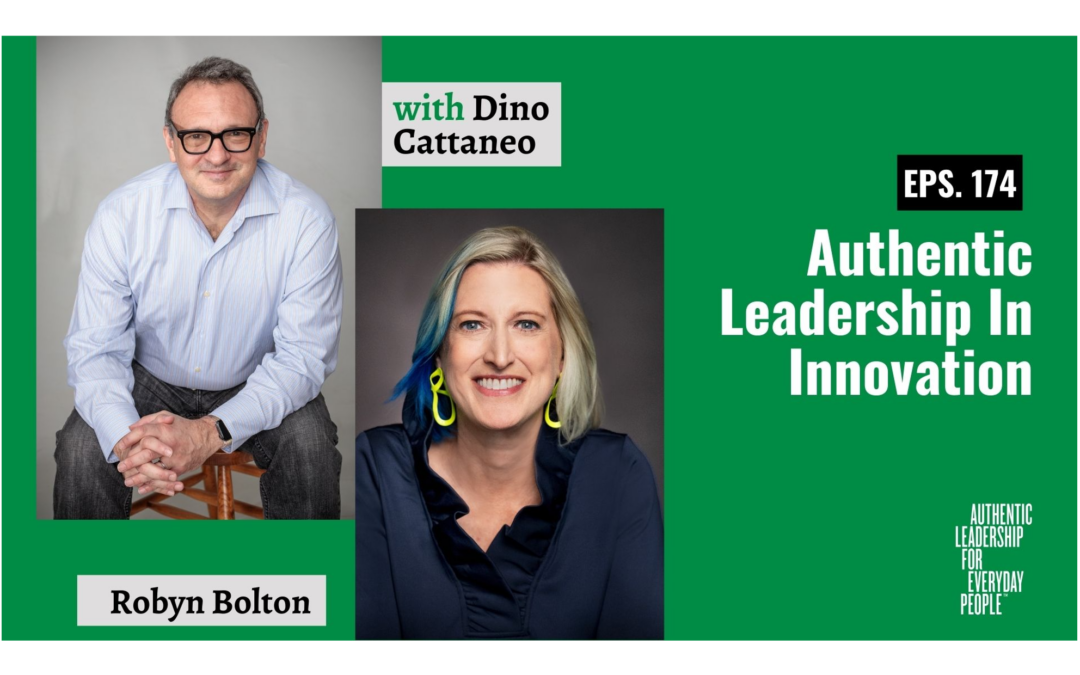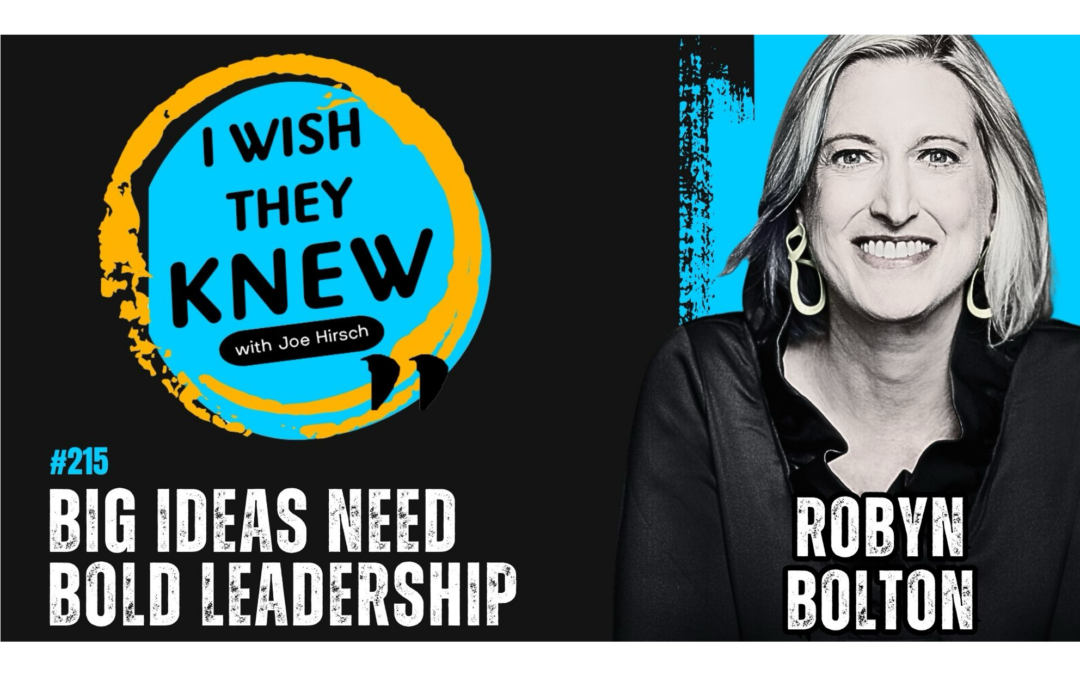
by Robyn Bolton | Feb 3, 2025 | Innovation, Tips, Tricks, & Tools
If innovation (the term) is dead and we will continue to engage in innovation (the activity), how do we talk about creating meaningful change without falling back on meaningless buzzwords? The answer isn’t finding a single replacement word – it’s building a new innovation language that actually describes what we’re trying to achieve. Think of it as upgrading from a crayon to a full set of oil paints – suddenly you can create much more nuanced pictures of progress.
The Problem with One-Size-Fits-All
We’ve spent decades trying to cram every type of progress, change, and improvement into the word “innovation.” It’s like trying to describe all forms of movement with just the word “moving.” Sure, you’re moving but without the specificity of words like walking, running, jumping, bounding, and dancing, you don’t know what or how you’re moving or why.
That’s why using “innovation” to describe everything different from today doesn’t work.
Use More Precise Language for What and How
Before we throw everything out, let’s keep what actually works: Innovation means “something new that creates value.” That last bit is crucial – it’s what separates meaningful change from just doing new stuff for novelty’s sake. (Looking at you, QR code on toothpaste tutorials.)
But, just like “dancing” is a specific form of movement, we need more precise language to describe what the new value-creating thing is that we’re doing:
- Core IMPROVEMENTS: Making existing things better. It’s the unglamorous but essential work of continuous refinement. Think better batteries, faster processors, smoother processes.
- Adjacent EXPANSIONS: Venturing into new territory – new customers, new offerings, new revenue models, OR new processes. It’s like a restaurant adding delivery service: same food, new way of reaching customers.
- Radical REINVENTION: Going all in, changing multiple dimensions at once. Think Netflix killing its own DVD business to stream content they now produce themselves. (And yes, that sound you hear is Blockbuster crying in the corner.)
Adopt More Sophisticated Words to Describe Why
Innovation collapsed because innovation became an end in and of itself. Companies invested in it to get good PR, check a shareholder box, or entertain employees with events.
We forgot that innovation is a means to an end and, as a result, got lazy about specifying what the expected end is. We need to get back to setting these expectations with words that are both clear and inspiring
- Growth means ongoing evolution
- Transformation means fundamental system change (not just putting QR codes on things)
- Invention means creating something new without regard to its immediate usefulness
- Problem Solving means finding, creating, and implementing practical solutions
- Value Creation means demonstrating measurable and meaningful impact
Why This Matters
This isn’t just semantic nitpicking. Using more precise language sets better expectations, helps people choose the most appropriate tools, and enables you to measure success accurately. It’s the difference between saying “I want to move more during the day” and “I want to build enough endurance to run a 5K by June.”
What’s Next?
As we emerge from innovation’s chrysalis, maybe what we’re becoming isn’t simpler – it’s more sophisticated. And maybe that’s exactly what we need to move forward.
Drop a comment: What words do you use to describe different types of change and innovation in your organization? How do you differentiate between what you’re doing and why you’re doing it?

by Robyn Bolton | Jan 29, 2025 | Innovation
Innovation has always had its problems. It’s a meaningless buzzword that leads to confusion and false hope. It’s an event or a hobby that allows executives to check the “Be innovative” box on shareholders’ To-do lists. It’s a massive investment that, if you’re lucky, is break-even.
So, it should be no surprise that interest and investment have dried up to the point that many have declared that innovation is dead.
If you feel an existential crisis coming on, you’re not alone. Heck, I’m about to publish a book titled Unlocking Innovation, which, if innovation is dead, is like publishing “Lean Speed: How to Make Your Horse Eat Less and Go Faster” in 1917 (the year automobiles became more prevalent than horses).
But is innovation really dead?
Yes, innovation is dead.
The word “innovation” is dead, and it’s about time. Despite valiant efforts by academics, consultants, and practitioners to define innovation as something more than a new product, decades of hype have irrevocably reduced it to shiny new objects, fun field trips and events, and wasted time and money.
Good riddance, too. “Innovation” has been used to justify too many half-hearted efforts, avoidable mistakes, and colossal failures to survive.
Except that it is also very much not dead.
While the term “innovation” may have flatlined, the act of innovating – creating something new that creates value – is thriving. AI continues to evolve and find new roles in our daily lives. Labs are growing everything from meat to fabric to new organs. And speaking of organs, three patients in the US received artificial hearts that kept them alive long enough for donor hearts to be found.
The act of innovation isn’t dead because the need for innovation will always exist, and the desire to innovate – to create, evolve, and improve – is fundamentally human.
Innovation is metamorphosing (yes, that’s a real word)
Like the Very Hungry Caterpillar, innovation has been inching along, gobbling up money and people, getting bigger, and taking up more space in offices, budgets, and shareholder calls.
Then, as the shock of the pandemic faded, innovation went into a chrysalis and turned to goo.
Just as a caterpillar must break down completely before becoming something new, we’re watching the old systems dissolve:
- Old terms like innovation and Design Thinking were more likely to elicit a No than a Yes
- Old structures like dedicated internal teams and “labs” were shut down
- Old beliefs that innovation is an end rather than a means to an end faded
This is all good news. Except for one tiny thing…
We don’t know what’s next
Humans hate uncertainty, so we’re responding to the goo-phase in different ways:
- Collapse in defeat, lament the end of human creativity and innovation, and ignore the fact that cutting all investment in creativity and innovation is hastening the end you find so devastating
- Take a deep breath, put our heads down, and keep going because this, too, shall pass.
- Put on our big kid pants, muster some courage, ask questions, and start experimenting
I’ve been in #2 for a while (with brief and frequent visits to #1), but it’s time to move into #3.
I’ll start where I start everything – a question about a word – because, before we can move forward, we need a way to communicate.
If innovation (the term) is dead, what do we use instead?
We’ll explore answers in the next post, so drop your words and definitions in the comments.

by Robyn Bolton | Jan 27, 2025 | Podcasts

by Robyn Bolton | Jan 22, 2025 | Innovation, Leadership, Metrics, Stories & Examples
“Consider this question: If workers are hobbled by 1,000 rules, does it make a meaningful difference to reduce them to only 900?”
The answer is No. In fact, this is precisely why most attempts at fighting bureaucracy fail – and why true transformation requires starting completely fresh.
Bill Anderson, CEO of Bayer, knows this and isn’t afraid to admit it. When he took the helm in June 2023, he discovered a company paralyzed by bureaucracy. Instead of trying to optimize the system, he looked at the company’s “1,362 pages” of employee rules and knew the entire structure needed to change.
Breaking the Stranglehold
As Anderson stated in Fortune, “There was a time for hierarchical, command-and-control organizations – the 19th century, to be exact, when many workers were illiterate, information traveled at a snail’s pace, and strict adherence to rules offered the competitive advantage of reliability.”
The modern reality is different. Today’s Bayer employs highly skilled experts, operates at digital speed, and competes in markets where, as Anderson observes, “the most reliable companies are the most dynamic.”
The challenge wasn’t just the encyclopedic rulebook. The organization’s “12 levels of hierarchy” created what Anderson called “unnecessary distance between our teams, our customers, and our products.” In today’s innovation-driven market, this industrial-age structure threatened the company’s future.
Unleashing Innovation
Anderson’s solution? “Dynamic Shared Ownership” – a radical model that puts 95% of decision-making in the hands of the people actually doing the work. Instead of annual budgets and endless approvals, self-directed teams work in 90-day sprints with the autonomy to make real-time decisions.
The results are already showing. Take Vividion, Bayer’s independently operated subsidiary. Operating in small, autonomous teams, they went from FDA approval to first patient dosing in just six weeks. They’re now on track to produce one or two new drug candidates for clinical testing every year.
Speed Becomes Reality
The impact extends across the organization. Bayer’s scientists have transformed their plant breeding process, reducing cycles from “five years down to merely four months.”
In the consumer health division, teams have accelerated their development timelines significantly, reducing product launch schedules “by up to nine months” in Asia. Within their first two months under the new system, these teams generated millions in additional value.
While financial markets remain uncertain about this transformation, one crucial metric suggests it’s working: employee retention has improved. The scientists, researchers, and product developers – the people doing the innovative work – are showing their confidence in this dramatic shift toward autonomous operation.
Why This Matters & What to do Next
For most of us, the question isn’t whether our organization has too much bureaucracy – it almost certainly does. The question is: what are you going to do about it?
Try this – Create a small, autonomous team with a 90-day mission. Give them real decision-making power and see what they can accomplish when freed from bureaucratic constraints.
Remember Anderson’s key insight: reducing rules from 1,000 to 900 won’t create meaningful change. Real transformation requires the courage to fundamentally rethink how work gets done.
For anyone who’s ever felt the soul-crushing weight of bureaucracy, Bayer’s radical reinvention offers hope. Maybe the path to innovation isn’t through better rules and processes, but through the courage to trust in human potential.

by Robyn Bolton | Jan 21, 2025 | Podcasts




